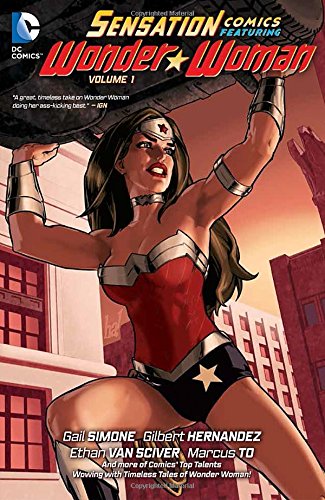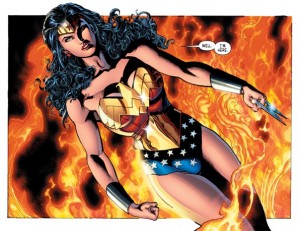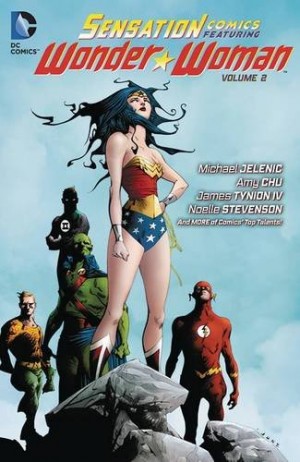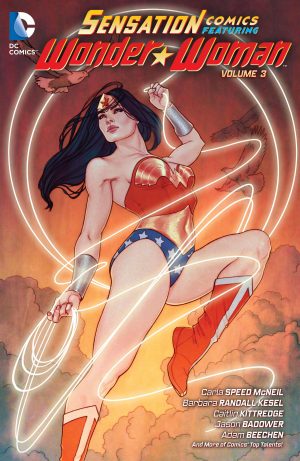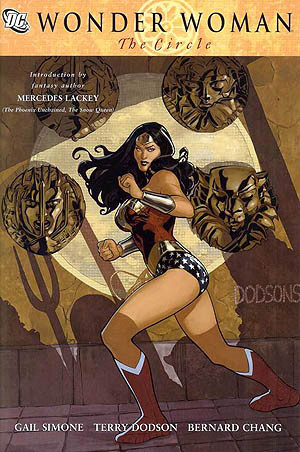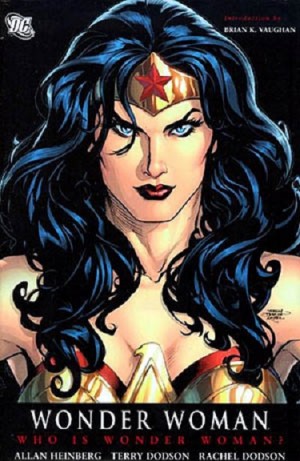Review by Ian Keogh
Almost 25 years after instituting a Batman series where creators could work on the character without being locked into continuity or a specific visual interpretation, DC introduced a similar series for Wonder Woman, taking the title from the 1940s comic in which her adventures appeared. It’s also a format able to accept multiple artistic styles ranging from the broad cartooning of Dean Haspiel, Gilbert Hernandez and Amy Mebberson to the more naturalistic pages supplied by Marcus To, Ethan Van Sciver (sample page) and David A. Williams. It proved briefly successful.
What’s pleasing is that with a single exception all the creators involved either have something to say about Wonder Woman or her background, or come up with a novel twist. In the opening story Wonder Woman is called into Gotham, and Gail Simone also has a point to make about Batman and his methods. This lifts an otherwise ordinary story, although there is a novelty in seeing Wonder Woman’s interaction with Gotham’s villains. We have a powerless Wonder Woman, Wonder Woman in a band, Wonder Woman facing Supergirl, and some material highlights the silly aspects of the Amazon’s back story, but this is loving pastiche.
Divergent artistic interpretations are interesting, although the person who likes them all probably doesn’t exist. Haspiel and Hernandez both pastiche the style of 1940s comics, with Hernandez portraying Wonder Woman as if a female body builder, and Gabriel Hardman’s impressive strip, which he co-plots, is almost all desperate action on Apokalips. Tom Lyle has the action down, but appears to be drawing a different woman with the same costume in every panel, and the usually reliable Van Sciver is patchy, with some pages looking rushed. Cat Staggs has an interesting style, but the layouts are awkward, and it’s Marcus To whose approach is nearest to the top end of Wonder Woman art.
The only total disappointment is Amanda Deibert’s tale of Wonder Woman facing Circe, an ordinary page filler that could have appeared in any Wonder Woman comic from the 1970s onward. Otherwise this opening volume has admirably diverse and entertaining content. As long as any prospective reader has no fixed idea about how Wonder Woman should look, they’re likely to enjoy this chocolate box selection.
